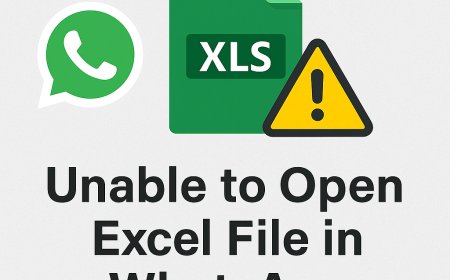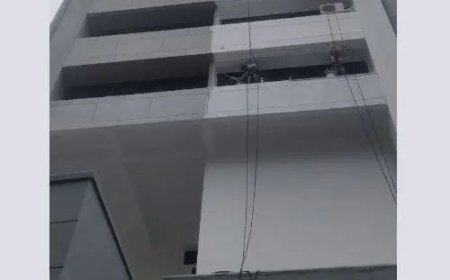Reducing Emissions, Not Output: Pollution Control in Oil and Gas

Oil and gas. Two words that stir up a whole lot of debate, don't they? On one hand, they're still the backbone of global energy. On the other hand, well the environmental impact isn't exactly a secret. But here's the kickernot everything in this industry is doom and gloom. Companies are now waking up to something important: environmental solutions for oil and gas are not just about protecting the planettheyre also smart business.
So, how do you keep rigs running without choking the sky? Lets talk about pollution control that doesnt mean slashing production or profits.
The Mess Were In (And Why It Matters)
Before we dive into solutions, lets face the facts: this industry has a pollution problem. From methane leaks to VOCs (volatile organic compounds), flaring to spills, the impact is real. But so is the pressure to change. Regulators are cracking down. Investors want greener portfolios. And lets be honest, no community wants to live next to a toxic site.
So, where does that leave oil and gas companies? In a tough spot, surebut not a hopeless one.
Fighting Smarter, Not Harder
Pollution control doesnt mean shutting down operations or spending millions on complex overhauls. In many cases, its about working smarter. Tiny leaks become massive over time. Minor inefficiencies compound. Its death by a thousand cuts unless you catch it early.
Thats where modern tools come in. Real-time emissions monitoring, vapour recovery units, improved flaring techthese arent fantasy tech from the future. They exist right now, and more companies are using them. The result? Lower emissions, reduced waste, andbonussaved money.
Lets say it louder for the folks in the back: reducing emissions doesn't mean reducing output.
Beyond Compliance: Why the Smart Moneys Going Green
For years, the game was simplestay compliant and avoid fines. But that mindset is changing. Now, its about reputation, efficiency, and long-term sustainability. Customers want cleaner fuel. Shareholders want sustainable growth. Governments want progress.
This shift means environmental solutions for oil and gas aren't just the right thing to do. Theyre the strategic thing to do.
Still think going green is just fluff? Ask the operators whove saved millions by upgrading to leak detection systems. Or those who turned emissions into saleable by-products. Pollution control is becoming a profit centre, not a cost sink.
Okay, Lets Get Technical: A-Frame BTEX Systems
Time to zero in on one of the unsung heroes of emission control: A-Frame BTEX systems.
Ever heard of BTEX? No? You probably wish you hadnt. It stands for Benzene, Toluene, Ethylbenzene, and Xylene. These compounds are nasty. Theyre volatile, theyre toxic, and yestheyre carcinogenic. Theyre also a common by-product in oil and gas tank vapours.
Now, here's where A-Frame systems come in. Instead of letting these chemicals escape into the air (and the lungs of nearby communities), these units capture, condense, and reclaim them. No magic. Just smart engineering.
What's even better? The recovered liquids can be reused or sold. So instead of being a problem, BTEX becomes a resource. Thats not just pollution controlthat's a two-for-one deal.
Portable, cost-efficient, and surprisingly low-maintenance, A-Frame systems are catching on for a reason. They fit into existing infrastructure and keep operations running without disruptions. For field operators trying to balance performance and compliance, theyre practically a gift.
Real Change Is Messy (But Worth It)
Lets be honest: transforming pollution control in oil and gas isnt glamorous. Theres no big moment of arrival. Its a processmessy, imperfect, frustrating at times. But it matters.
Not every operator has the same resources. Not every facility is equipped for cutting-edge upgrades. But whether it's a major refinery or a mid-sized drilling operation, there are steps forward. Start with leak detection. Add vapour recovery. Then maybe roll out BTEX recovery. Step by step, site by site.
No silver bullets herejust grit, persistence, and smart decisions.
Some Operators Are Already Ahead
Want proof this can work? Look at the Permian Basin. Some operators there are using satellite and drone tech to detect methane leaks faster than ever. In Alberta, field teams are retrofitting older equipment with low-bleed valves and installing A-Frame BTEX systems to tackle VOCs at the source.
And surpriseits not slowing them down. Theyre improving efficiency while cleaning up operations. Go figure.
Sure, some still drag their heels, but the leaders are proving that environmental upgrades can be an advantage, not a burden.
WaitIsnt This Just Greenwashing?
Fair question.
Lets be clear: slapping a green label on dirty operations and calling it a day? Thats greenwashing. What were talking about here is actual pollution control, backed by real data, tech, and measurable results.
Are some companies faking it? Yep. But others are doing the work. You can tell the difference.
A good litmus test? Ask what tech theyre using. If they mention A-Frame BTEX systems, vapour recovery, or closed-loop designs, chances are, theyre walking the walk.
Lets Wrap It UpBut Not Tidy
Heres the deal: oil and gas arent going away tomorrow. Like it or not, its still critical to how we live, travel, and power our world. But that doesn't mean we have to accept the pollution that comes with it.
With the right environmental solutions for oil and gas, emissions can drop without putting the brakes on production. From BTEX recovery to leak prevention, the tech exists. The challenge now? Getting more operators to use it.
The future isnt fossil-free overnightbut it can be fossil-cleaner, starting now. And maybe thats not perfect. But its a hell of a lot better than doing nothing.































